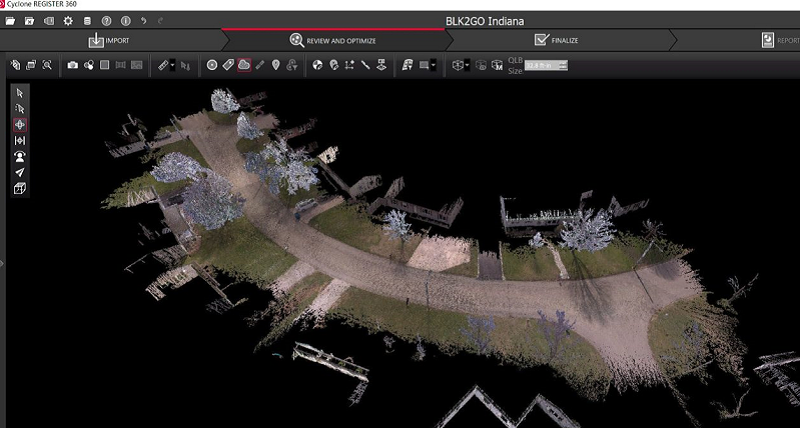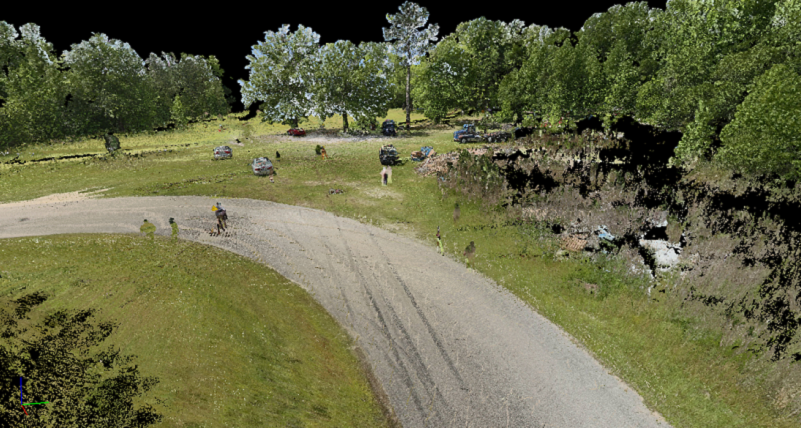6 easy steps to make sure you get the right digital scene documentation technology
How can you make sure you get the right technology from the right manufacturer? This approach will help you build confidence as you lead your agency into the future of digital scene documentation.

Whether your existing scene documentation tools are nearing the end of their useful life or you’ve decided you need the efficiency and performance benefits of a technology upgrade, there has never been a better time to invest in new technology for your agency. From easy-to-use high-speed laser scanners that can capture an entire scene in minutes, to GNSS RTK rovers that perform photogrammetric measurements on the fly, to handheld imaging scanners that capture images while you walk, professional-grade unmanned aircraft systems and handheld in-picture measurement devices—digital scene documentation technology can significantly reduce your time on scene while capturing more data, enhancing your safety and optimizing your overall efficiency.
But with all the new technologies comes a new set of decisions that need to be made. How can you make sure you get the right technology from the right manufacturer? Here are six easy steps that will help you build confidence as you lead your agency into the future of digital scene documentation.
1. Investigate all your options
News and social media about the latest drone or laser scanner might be the spark that ignites your technology discussion, but be sure to thoroughly investigate all your options before going too far down a specific path. Is a new unmanned aircraft the best choice for your agency, or would a different technology that operates in all weather and lighting conditions be a better fit? Which make and model of the tool you’re evaluating will give you the best performance with the fastest time to proficient use? What is the overall reputation of the manufacturer, both in terms of their past performance and their commitment to innovation?
Consider the types of scenes you work most often as well as the pros and cons of each unit from different manufacturers to help you narrow your technology selection.
2. Work with a reputable and knowledgeable technology provider
Whether you work directly with a manufacturer’s representative or a consulting and training firm, make sure your technology provider is qualified to give you expert guidance and not just sell you on a specific product. Are they asking insightful questions about your needs, constraints and the environments you work in and really listening to your answers? Are they knowledgeable about your applications? Do they have real-world experience working with the technologies they represent in the types of situations you regularly encounter?
Working with someone you trust is crucial to making the right technology investment, getting up to speed quickly and maximizing long-term success.
Transitioning to 3D workflows? Here’s how Spokane PD’s Major Crimes Unit made it fast and simple >
3. Get a real-world demo
Anyone can make technology look compelling in a carefully scripted video or social post, but the real world is much less predictable. Can you use the technology at night? What about in extreme cold or heavy rain? If possible, set up a mock scene with markings and evidence representative of an actual scenario, and then ask the rep or consultant to capture and process the scene and present the results. You can even simulate adverse weather conditions by using a water hose at the scene or storing the unit in a freezer before the demonstration. Participate in the exercise and go hands-on with the technology if you can. Scheduling back-to-back demonstrations with multiple vendors will give you a good feel for which technology performs the best under similar conditions, as well as which workflow works best for your agency.
4. Evaluate training and support
Digital scene documentation should be easy to use and reliable, but that doesn’t mean you won’t need training and support. The fastest way to hit the ground running with your new investment (and start reaping the benefits sooner) is to make sure the vendor provides ongoing, reliable customer support and has the references to prove it. Basic training should be provided to help your investigators get up and running on the new technology quickly, but be sure to explore the other training resources available to help you maximize the return on your investment. Training should not be a one-size-fits-all approach but specialized for the applications you regularly encounter in your work. Your trainer should also be well-versed in courtroom trials and expert witness requirements.
5. Explore funding resources
Once you’ve identified the right technology and provider for your organization, getting budget approval is often the next step. Many agencies don’t realize all the options that are available when it comes to technology funding. From grants, to leases to creative cash solutions, funding is available from an array of sources. Your technology provider should be able to help you explore options that will work for your agency.
6. Document the benefits
After you’ve made your purchase, try to document the improvements you notice in your day-to-day work. Time savings, better use of human resources, increased safety, faster turnaround on deliverables, and more accurate and compelling deliverables are just some of the benefits you can expect to achieve with the right technology. With detailed notes and examples, you’ll be better prepared to seek approval and funding for your next technology purchase—and better able to build a strategy for long-term success.
Why your agency should aim for a fully digital scene mapping workflow




























